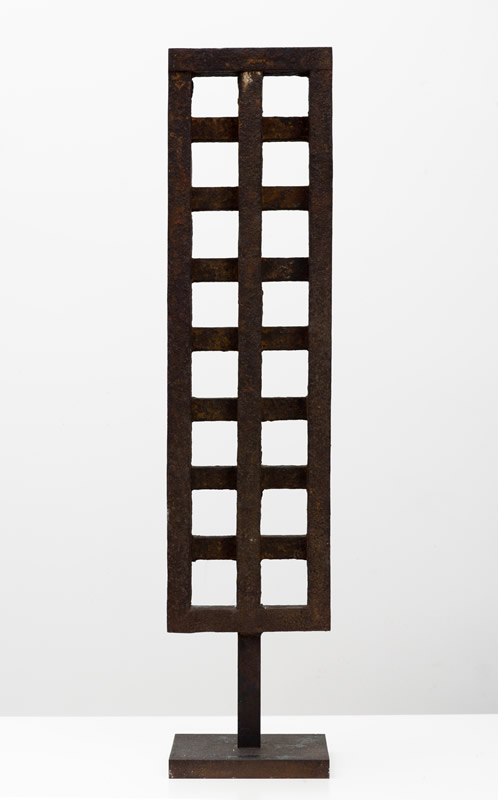Ettore Colla was one of the great protagonists of Italian Abstract Art. He was born in Parma in 1896 and began to attend the local Art Academy in 1913 before moving to Paris in 1923 where he met and became acquainted with the likes of Emile-Antonie Bourdelle, Costantini Brancusi, Charles Despiau and Henri Laurens with whom he worked.
His artistic style, once having returned to Italy and settled in Rome in 1930 was very similar to the “Novecento” movement of Margherita Sarfatti, and in particular, to the archaic and monumental neo-Plasticism of Arturo Martini. Around the middle of the 1950’s, the sculptor underwent a further change and began utilising salvage materials, mostly in iron, and created abstract and allusive “assembled” works.
This new turning point was likened by the critics of the day to a new Dadaist phase that had been identified in those first few “assembled” works made by objects trouvés by artists such as Francis Picabia or Marcel Duchamp. This was wrong however since in Ettore Colla’s artistic work there is no provocative intent that was typical of that particular movement.
In Enrico Colla’s sculpture there is a quest however for spatial forms and relationships that was typical of the Abstract artist. Colla makes little reference to geometric abstract art unlike informal abstract art with whose protagonists he enjoyed the most intense of relations. Aside from all of this, there is a certain allusion to realism, which is more typical of certain examples of Surrealist sculpture. As claimed by Giulio Carlo Argan, “Enrico Colla’s pieces contain within them a story and a certain morality. They are fables by the La Fontaine of our times only that now people are not symbolised as “knowledgeable” animals but as fragments of a large piece of broken machinery. “This is no mere ‘heap of artistic junk’. The attraction exercised by the artist’s imagination depended essentially upon the fact that it was able to conserve, above all else, a form”.
3421 Views |
Like

